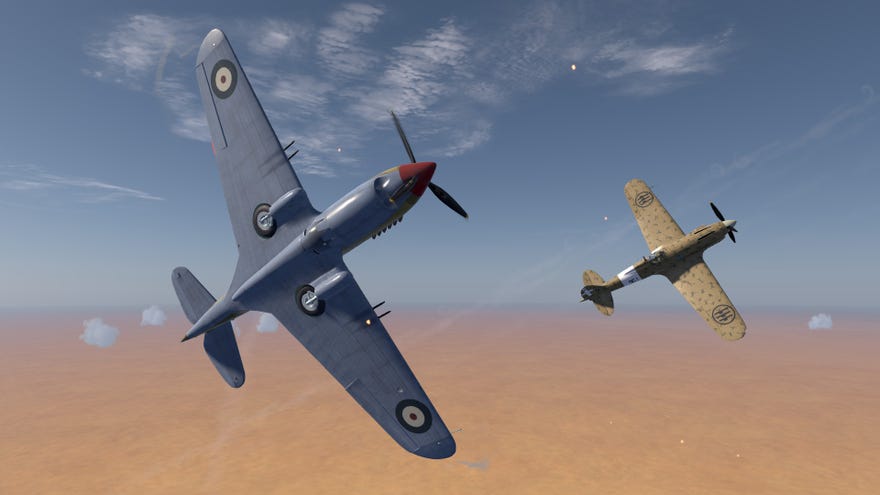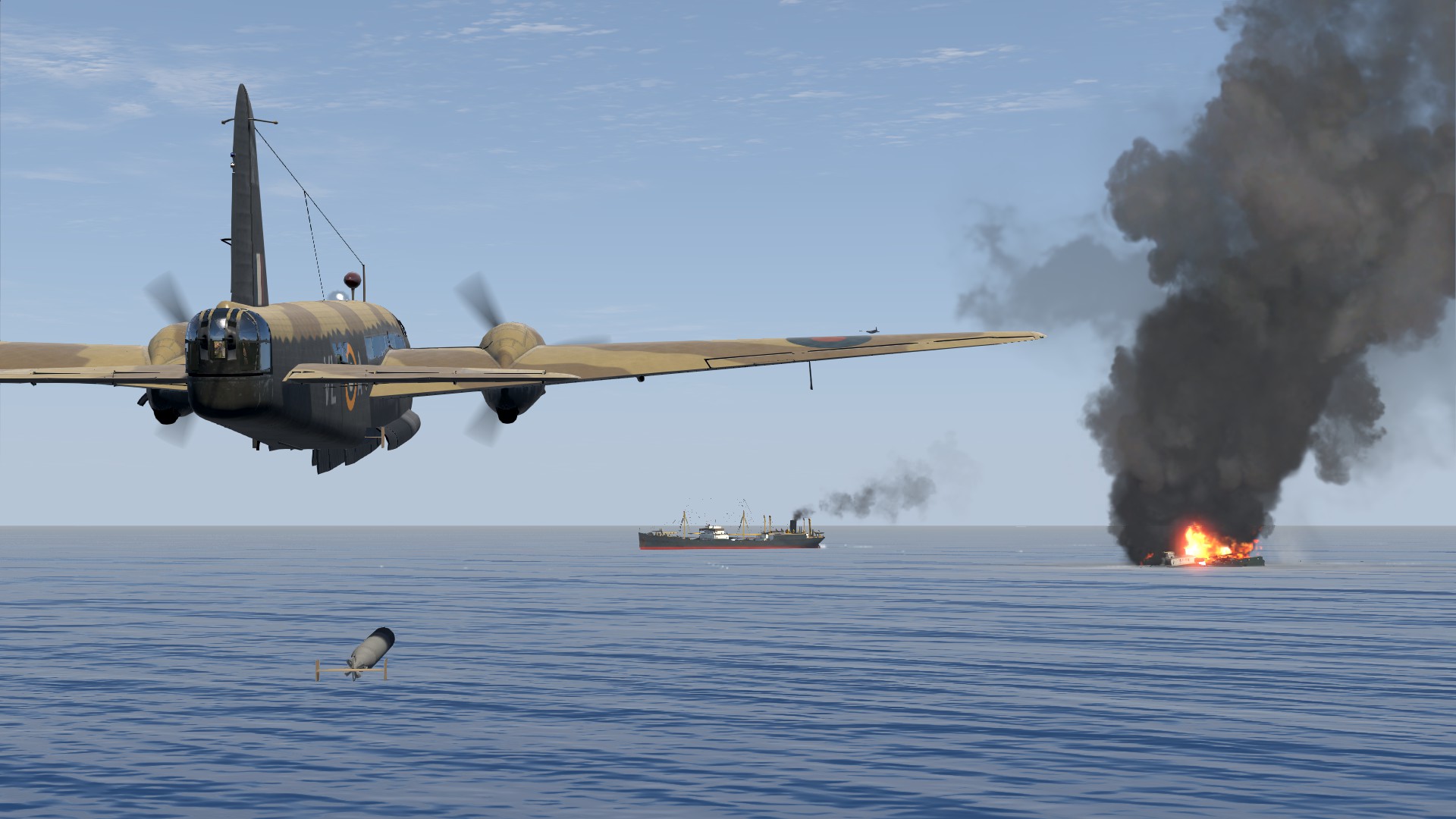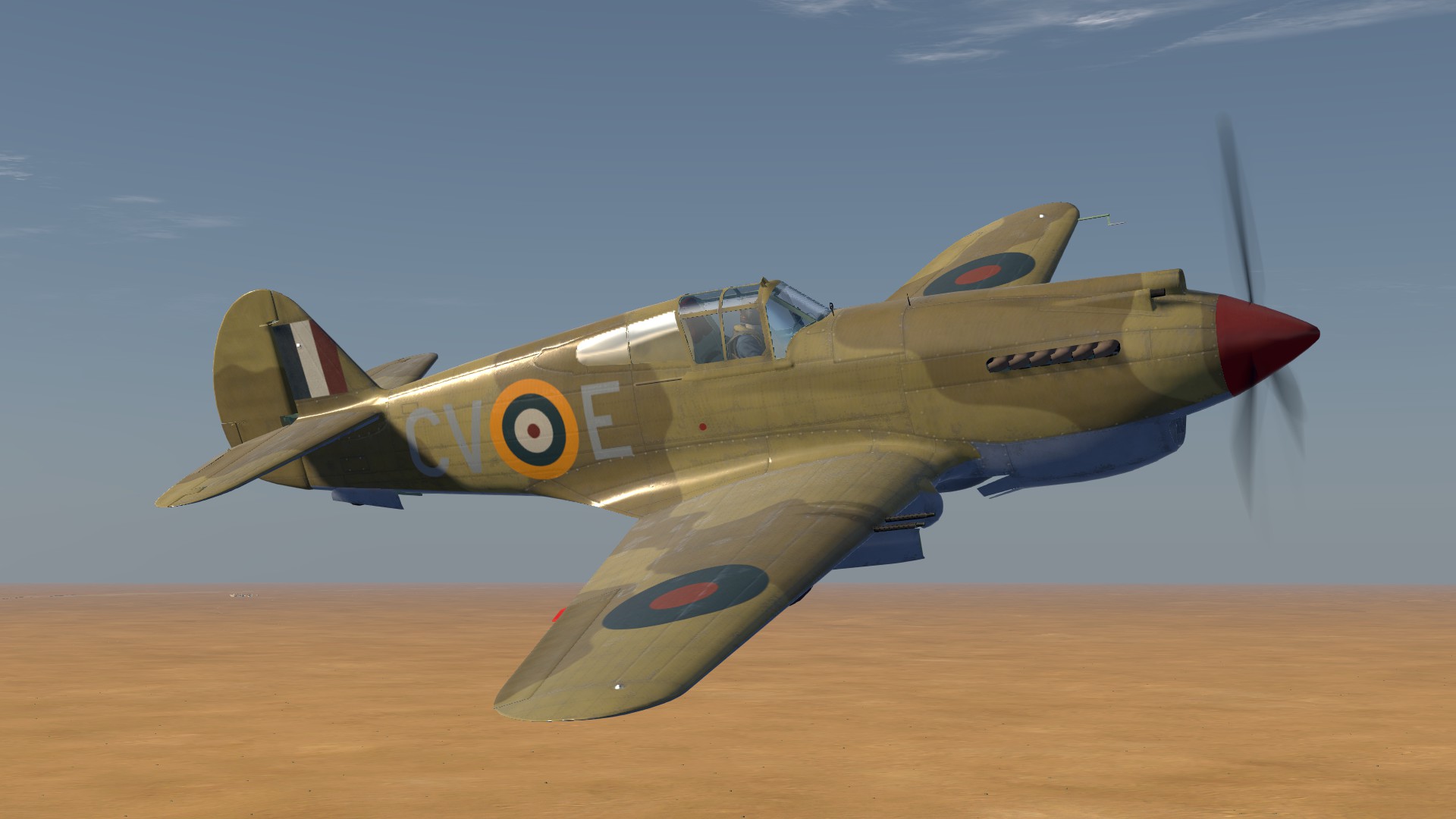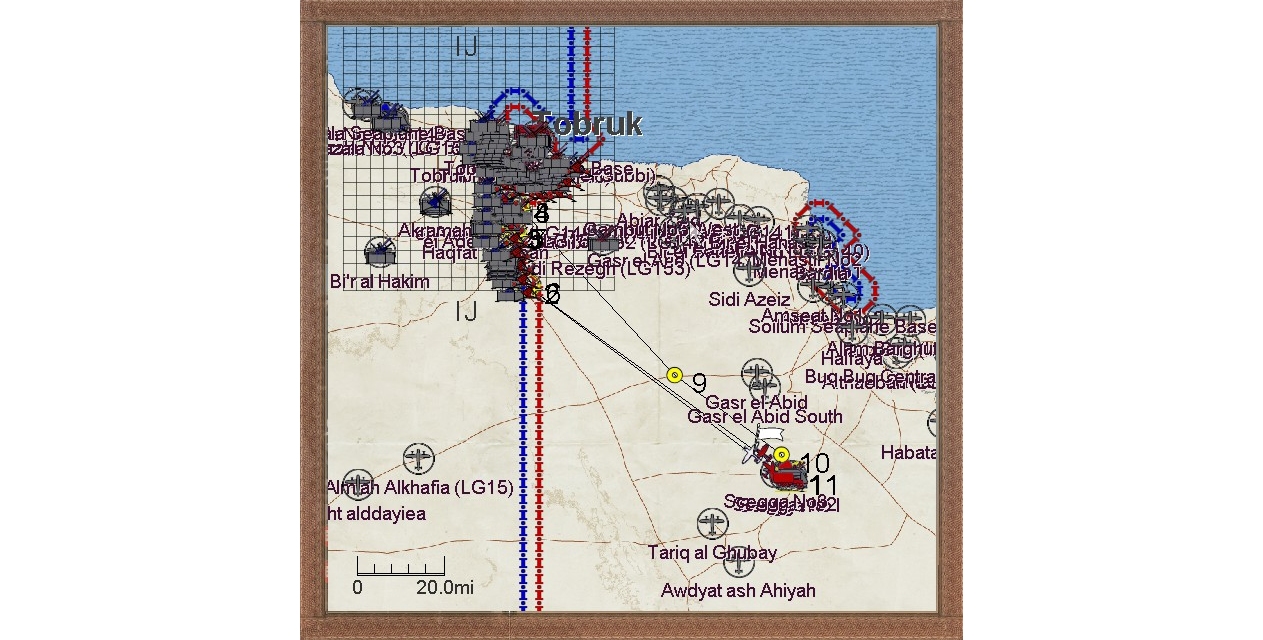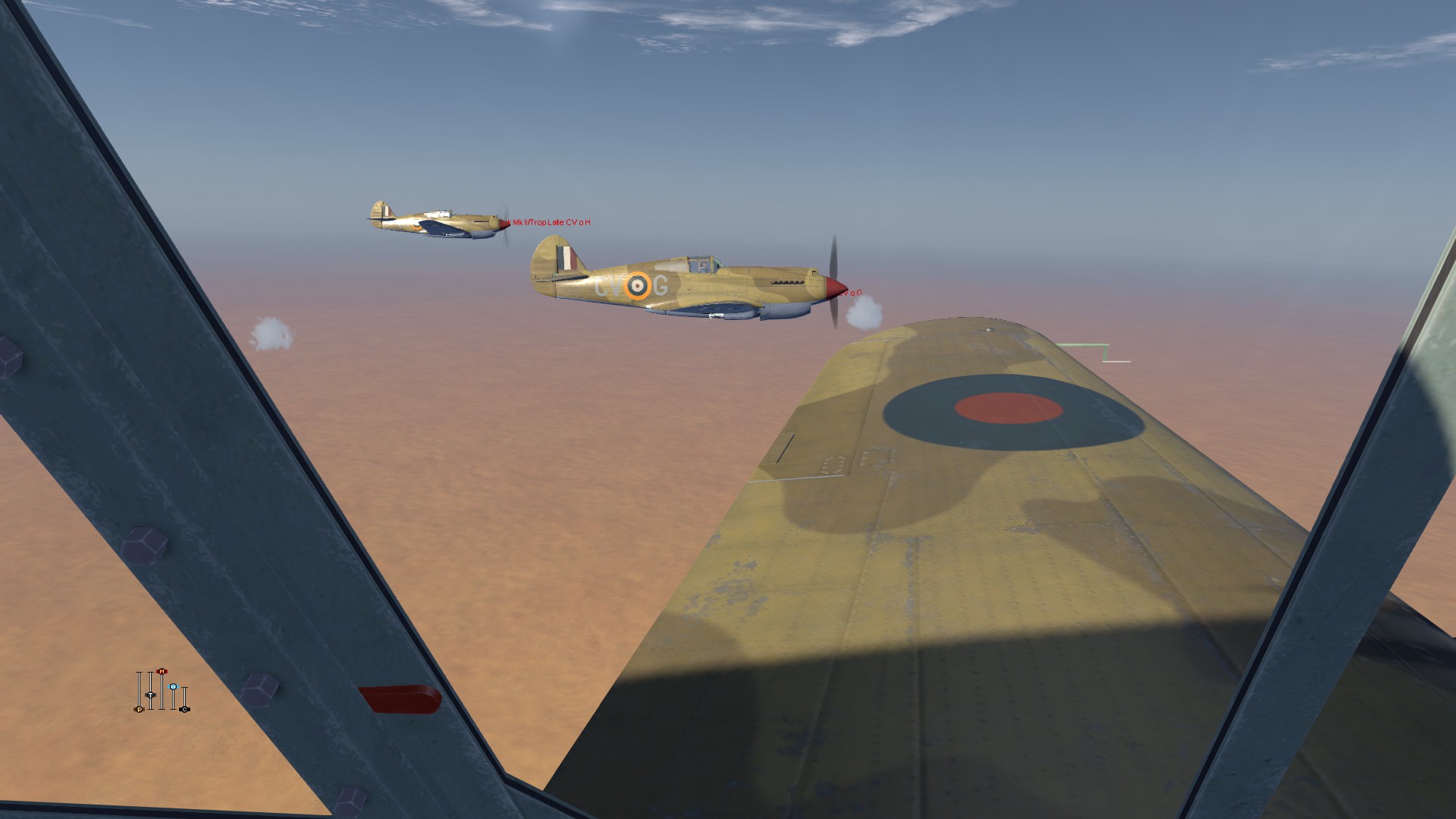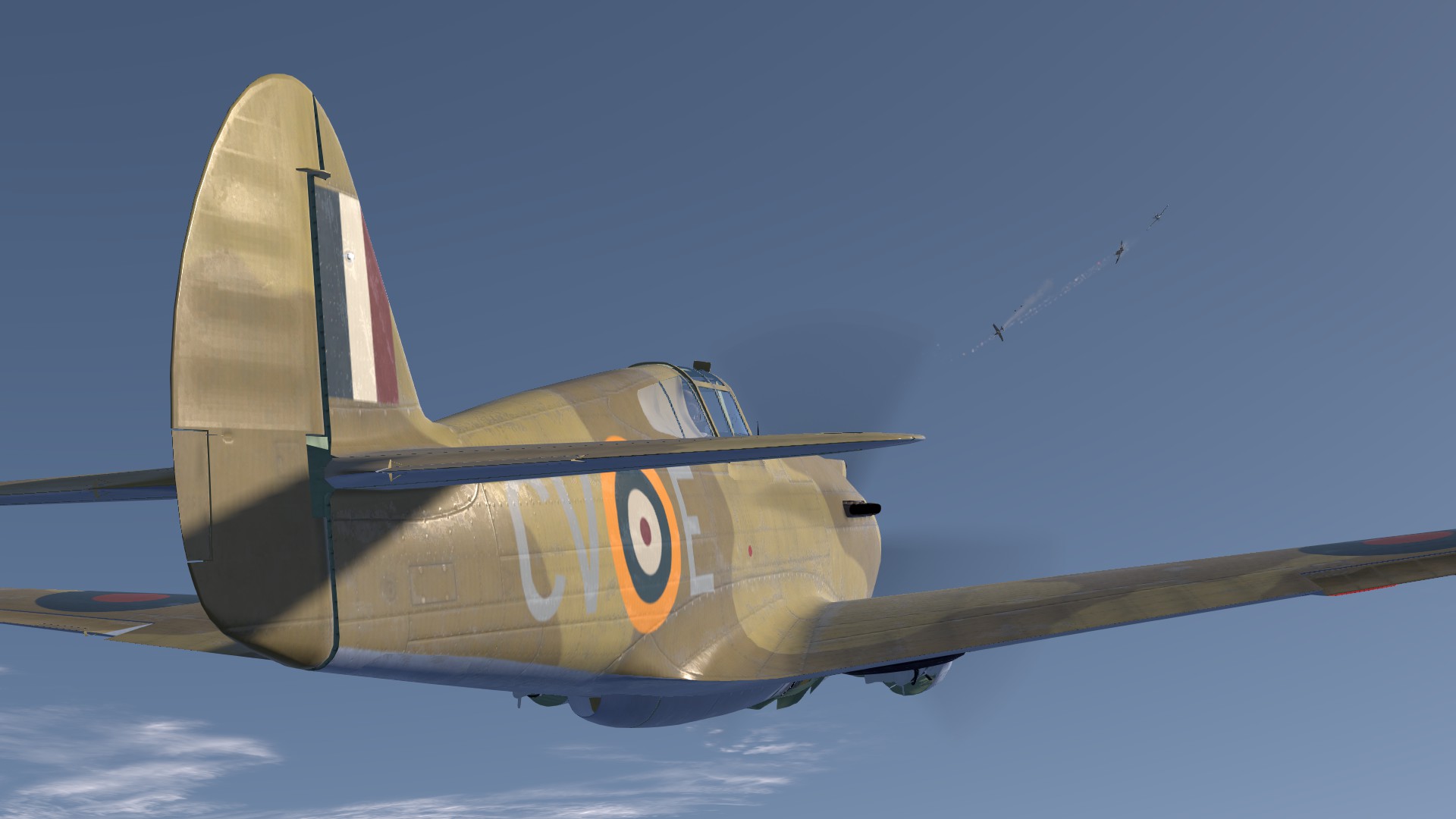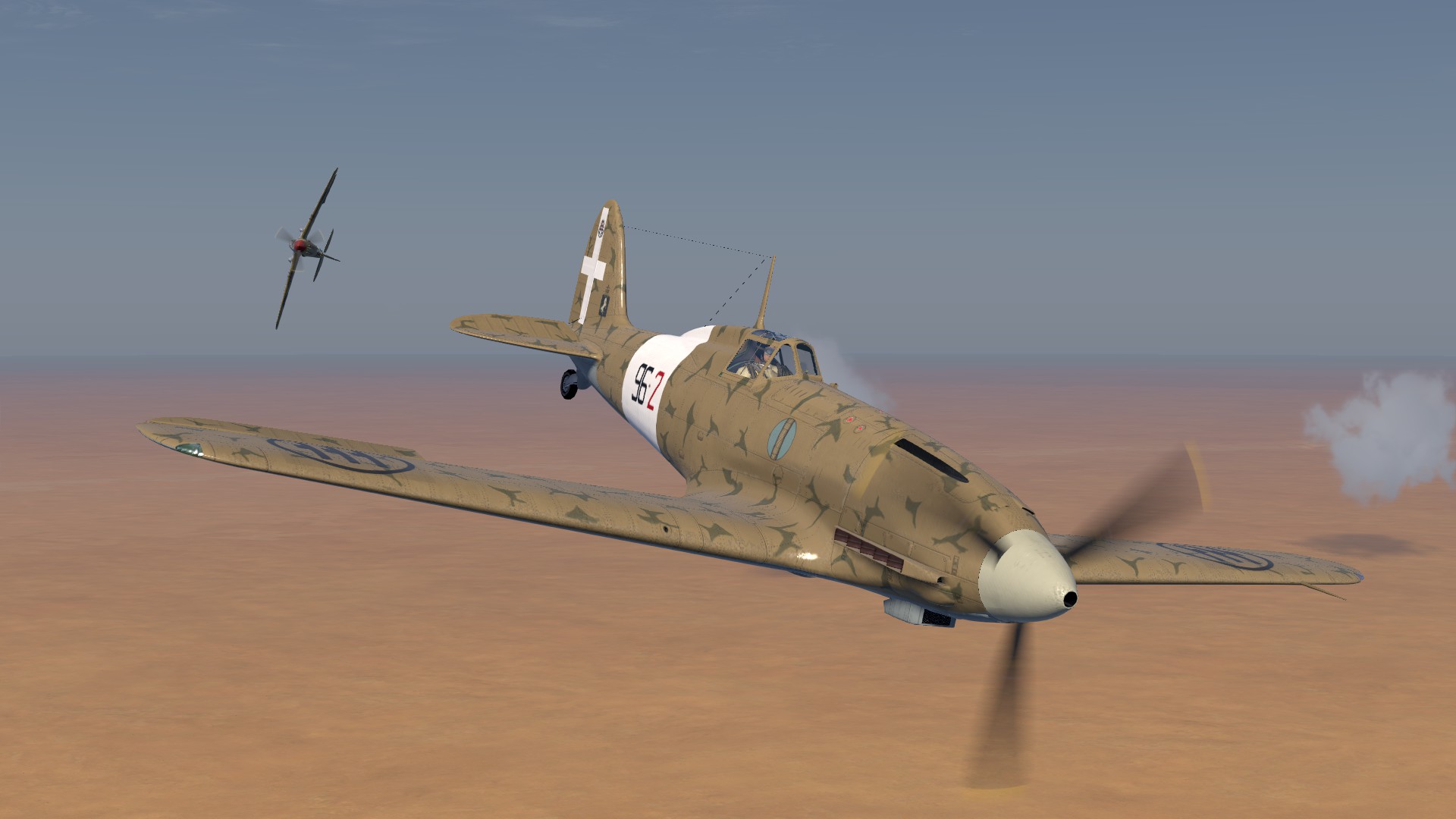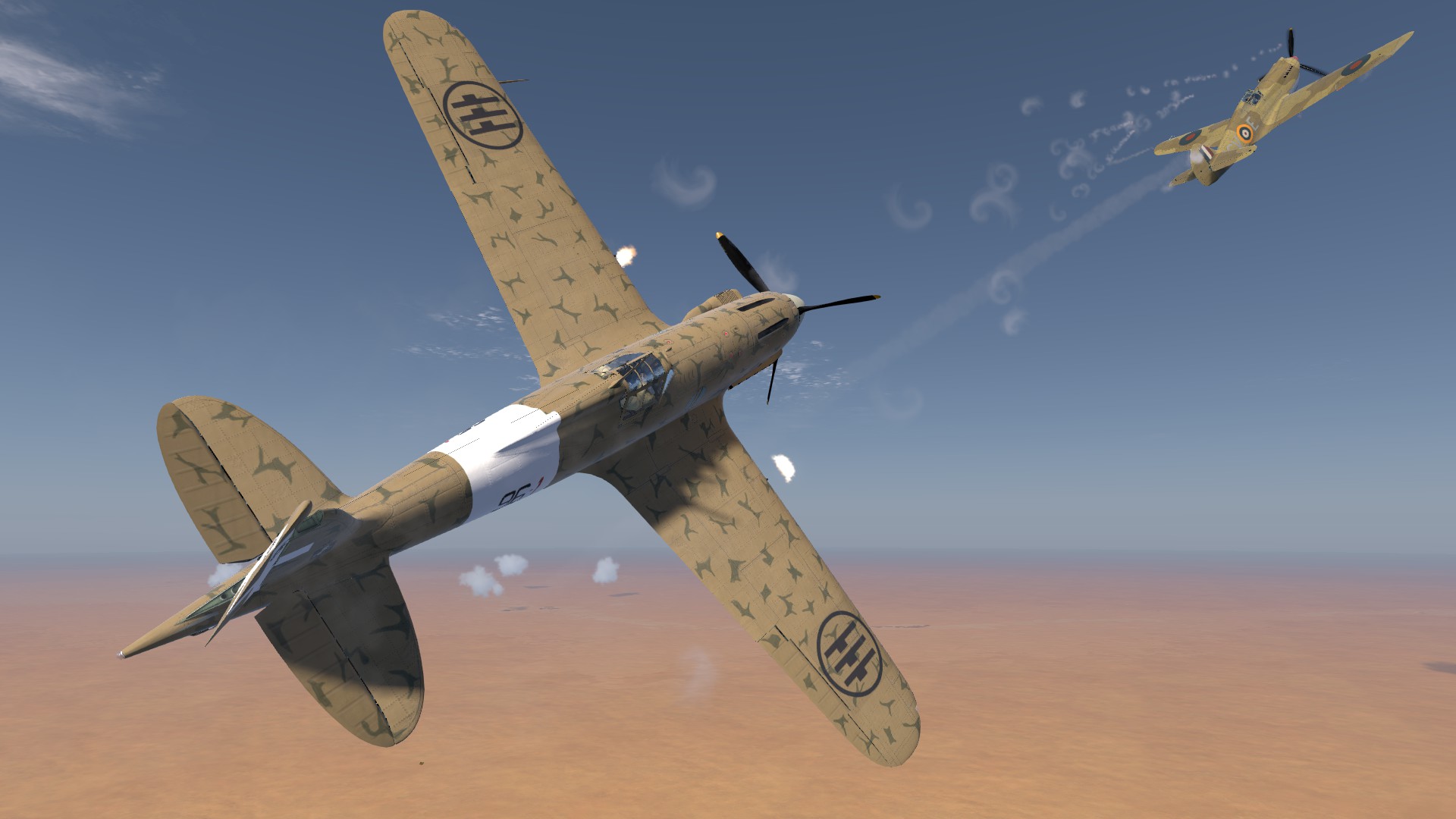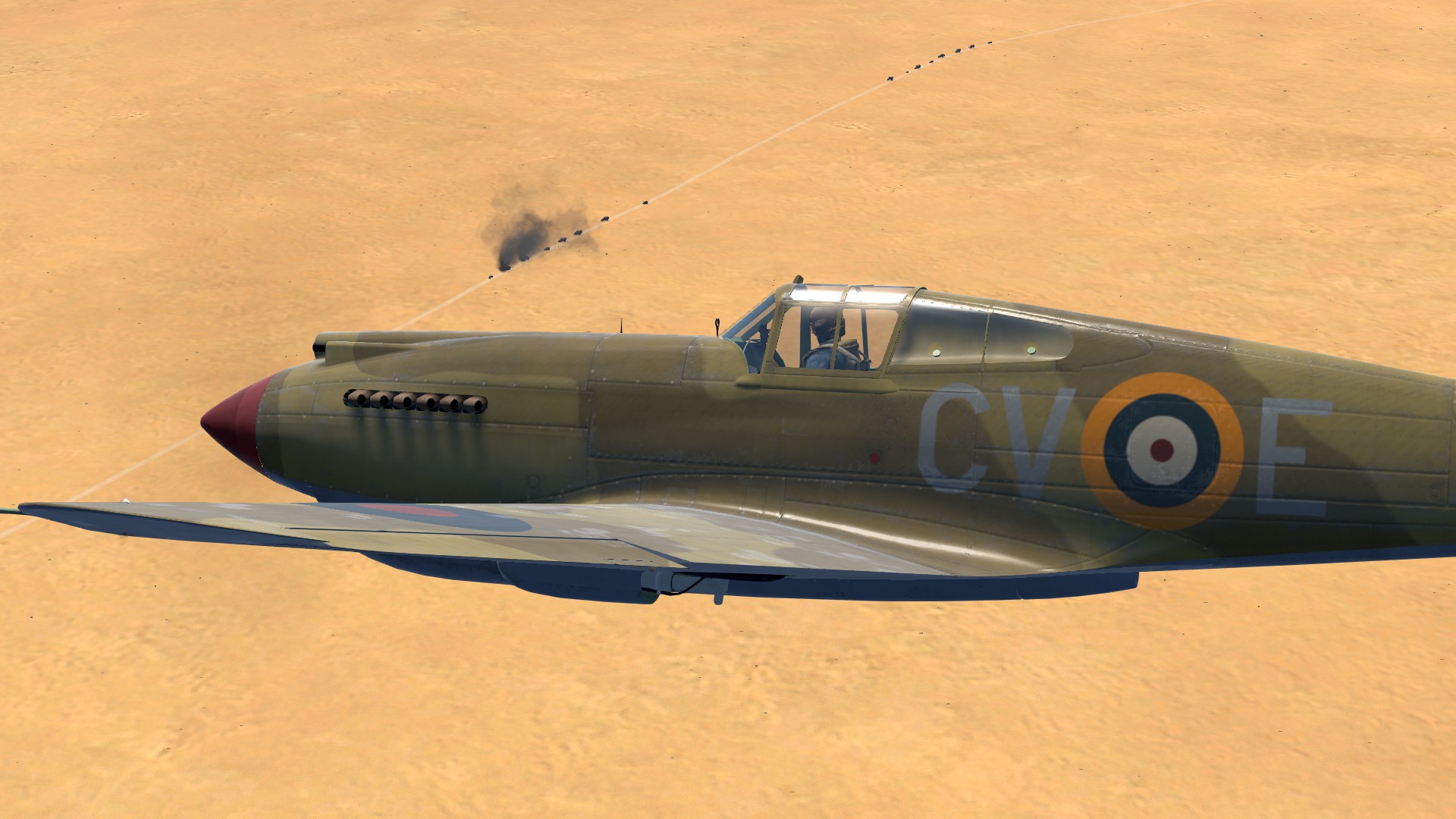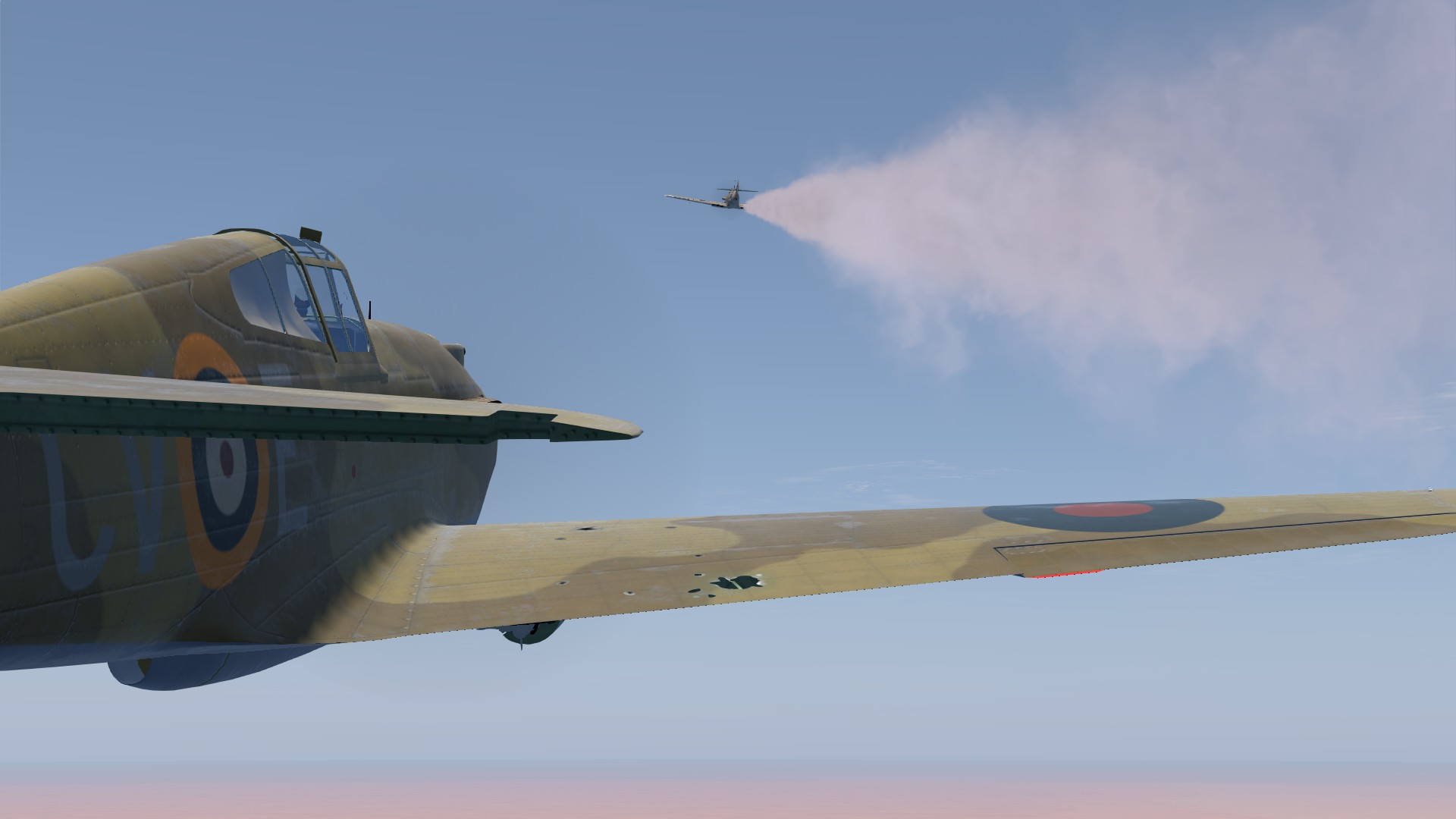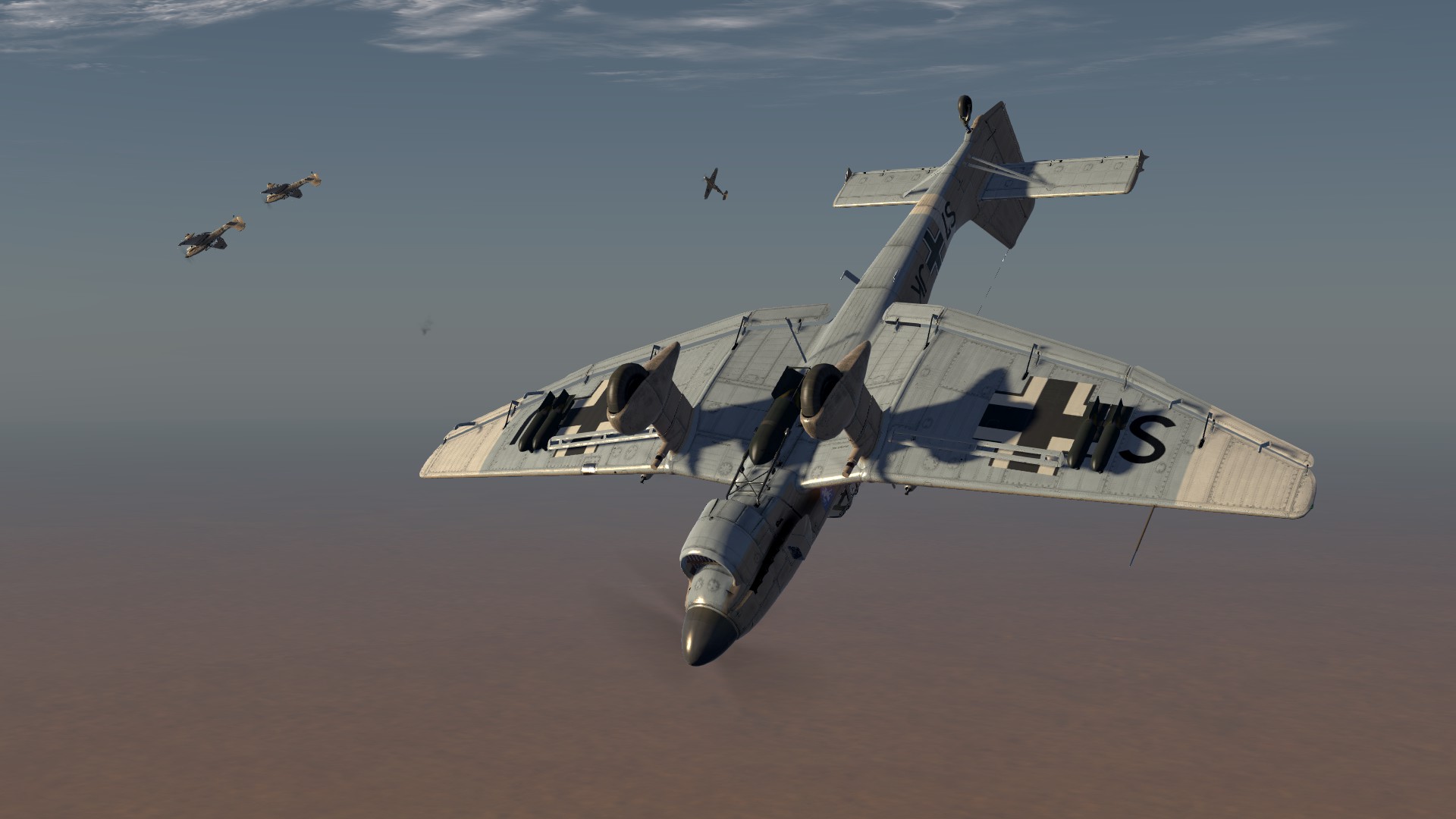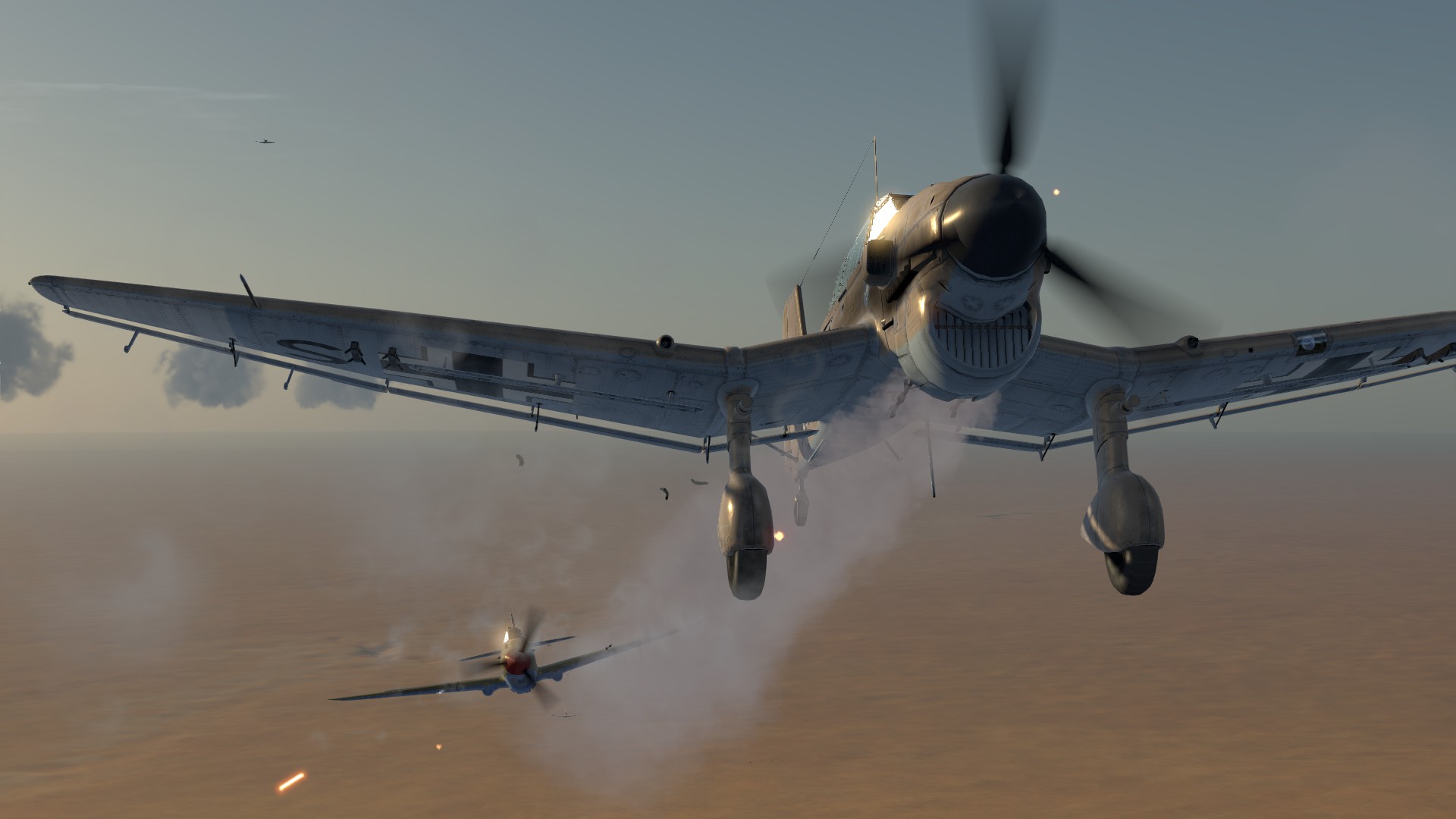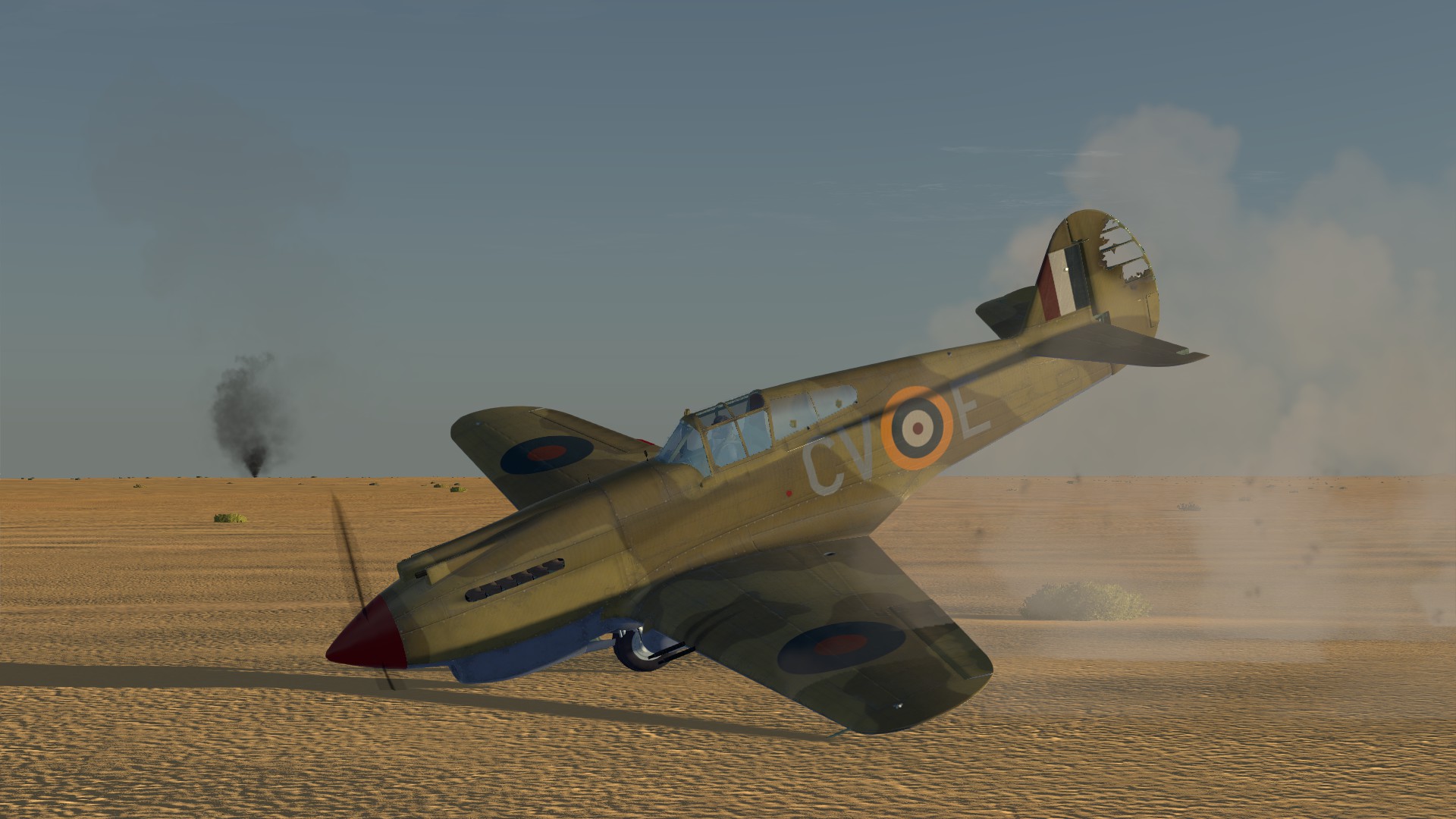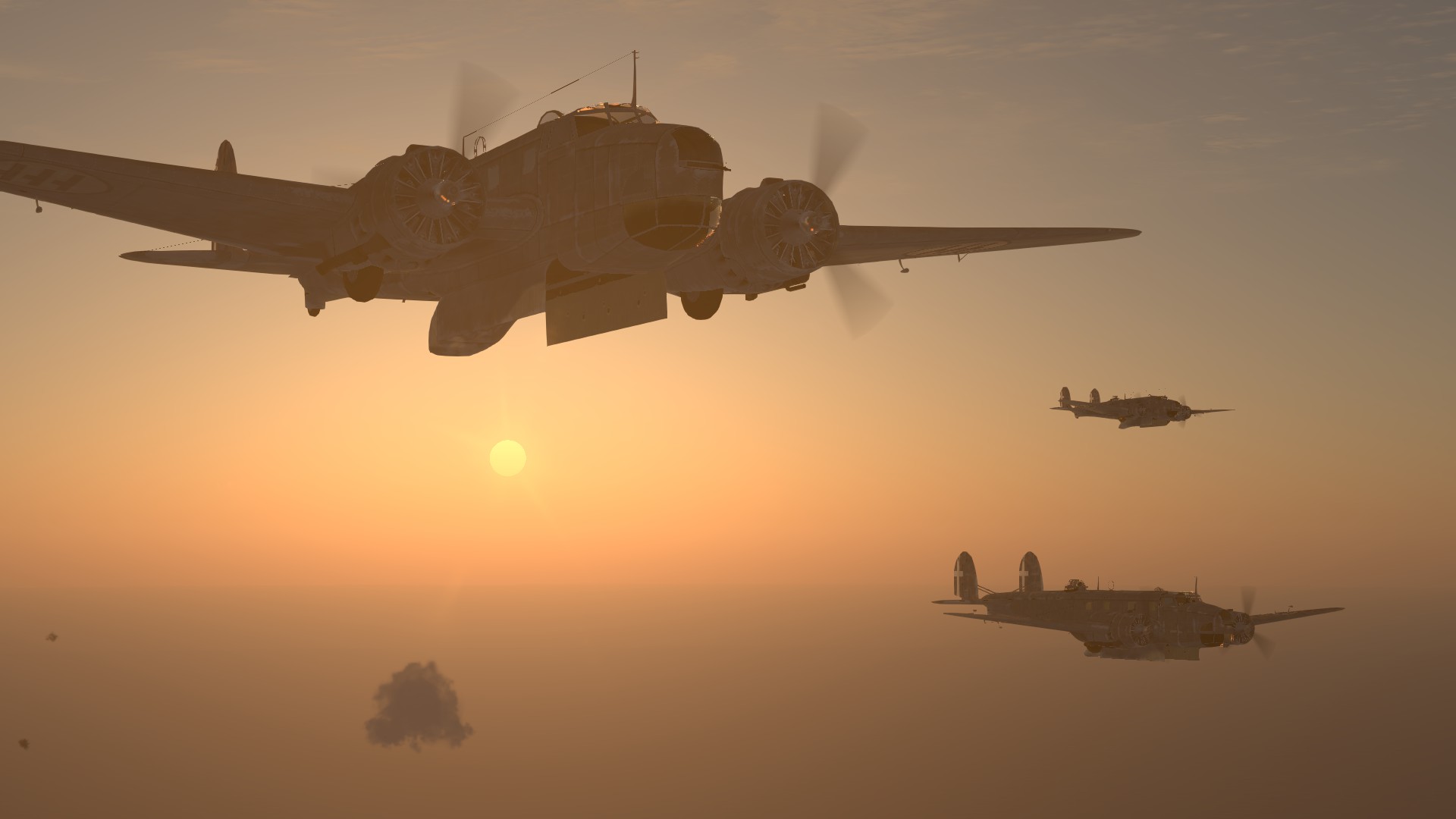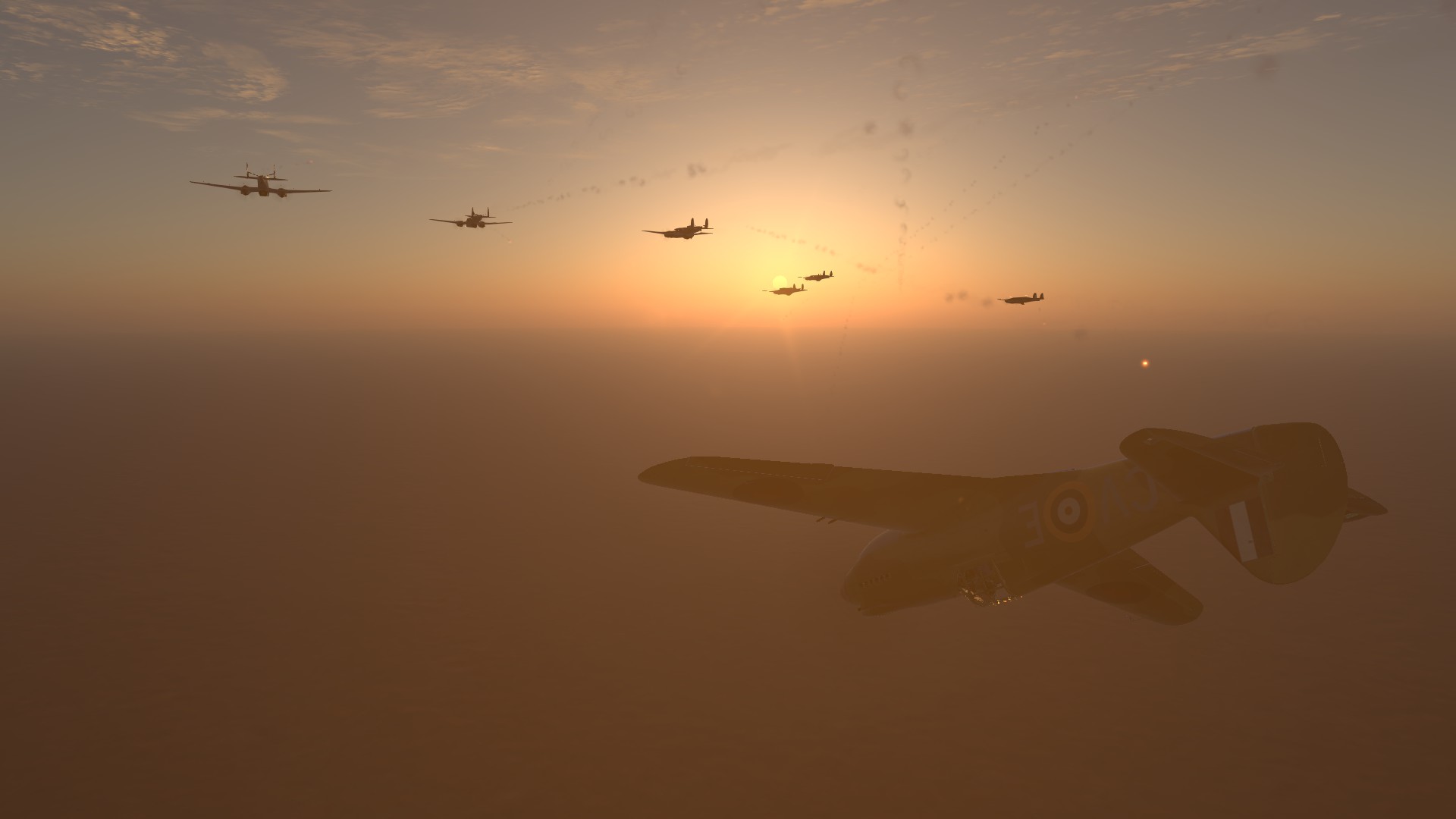The Flare Path flings Tomahawks (about the sky)
Cliffs of Dover swaps chalk for sand
In Britain at least, Desert Wings – Tobruk's release couldn't have been timed much better. Convincing yourself you're buzzing WW2-era North Africa in a sweltering airborne sweat lodge is much easier when your skin and flightstick are clammy with briny body dew. Not that this generously proportioned IL-2 Sturmovik: Cliffs of Dover expansion is wholly reliant on real-world weather for its perspiration production. When it comes to beading brows and irrigating armpits, the unusually energetic bandits more than pull their weight.
We've had to wait an awfully long time for a commercial combat flight sim rooted in the Western Desert campaign. Surveying Desert Wings – Tobruk's impressive selection of beautifully crafted flyables, you may find yourself asking “Why?”
The unfashionable setting means a bevy of unfashionable aerodynes. In addition to new variants of Cliffs of Dover machines (Spitfire, Hurricane, Blenheim, Beaufighter, Bf 109, Bf 110, Stuka, Ju 88, He 111, Freccia...) there are entirely new biplane and monoplane fighters (Gladiator, Falco, Tomahawk, Kittyhawk, Martlet, Folgore, Dewoitine D.520) plus an additional medium bomber, the Vickers Wellington.
Team Fusion's £55 creation isn't short of tempting/fresh campaign content either. Nestling amongst the BoB sortie sequences post-install are eight scripted mission strings featuring debutante warbirds and the 385 km x 385 km Tobruk-anchored map.
Initially drawn to the Wimpy one, I ended up switching to the Tomahawk/Kittyhawk campaign when I discovered that the Wellington lacked a manual (This morning's patch added manuals for all aircraft). What follows is an account of the first five sorties in the ten-scenario 'Desert Hawks' story.
Compared to some of the turkeys the panicking Air Ministry purchased from US manufacturers at the start of WW2, the Curtiss Tomahawk was a good buy. Although the type was close to useless as a bomber interceptor because of an Allison engine rated at a paltry 12,000 feet, the RAF, RAAF and RNZAF made good use of it in North Africa and the Far East where a low ceiling was less of a handicap. Pilots who flew it in these theatres came to value its almost vice-less handling characteristics, high dive speed, and general robustness. When the Tomahawk's more powerful and better armed descendent, the Kittyhawk, came along, that respect and affection only intensified.
Set during Operation Crusader, the Allied bid to drive Rommel and Co. away from the Libyan-Egyptian border and besieged Tobruk, 'Desert Hawks' begins with a morning patrol over the front-line. A comforting paragraph at the end of the briefing - “Your first priority is the protection of your own life and aircraft. Your second priority is to protect the lives and aircraft of your fellow pilots. Your third priority is to destroy enemy aircraft.” - grounds some of my gastric butterflies but not all of them. As there seems to be no way to adjust the difficulty of Desert Wings' campaigns and it's a long time since I flew Cliffs of Dover or a Tomahawk, I'm not exactly brimming with confidence when I coax my steed into the air for the first time and turn its distinctive snout (The three ridges on the Tomahawk's nose are a supercharger intake flanked by two Browning 0.50 MGs) to the NW.
For the next fifteen minutes my eyes dart from the gauges on the P-40's handsome clickable panel to the bland but framerate-friendly wilderness unspooling beneath my wingtips.
I'm beginning to wonder whether Team Fusion's scenario designers have started the campaign with an anti-climax for the sake of realism and suspense-building when a string of combat reports sends my thoughts scuttling in a very different direction. It appears four AI Hurricanes have just dashed themselves against Cyrenaican sand for no good reason. Not a good sign.
Soon after we arrive at the patrol area, three purposeful Italian thunderbolts drive all thoughts of dodgy AI from my mind.
My first contribution to the fast-moving, pleasingly three-dimensional fray is the deconstruction of a Tomahawk sandwich which happens to cross my path. Several bursts of long-distance MG fire discourages the more dangerous of the two slabs of focaccia and commences a lengthy pursuit that leaves me sweaty, short on ammo, and wondering if I have what it takes to compete in Desert Wings' lofty arenas.
Crikey, these C.202s sure are slippery fellows. No sooner have I manhandled one into my aiming reticle, it's wriggled out again with a maddening mixture of rolls, climbs and dives.
I'm so focused on nailing one fidgeting Folgore that I almost wind up easy meat for another. A timely throttle adjustment and flick of the rudder sends the sly stalker barrelling past but not before it has landed one hit. “Oil Gasket Leak!” appears in red in the report window. Not liking the sound of that one bit, I hurriedly disengage and head for home.
About halfway back to Fort Maddalena “Oil Gasket Leak!” is joined by “Exhaust Head Failure!” and “Governor Failure!” in the on-screen log. As my Allison V-1710 is clearly in the process of expiring I select an obstruction-free tract of desert (Not difficult) and prepare for the inevitable. How easy are belly-landings in Cliffs of Dover?
Tomahawk E for Edwina slides onto the sand with the effortless grace of a hovercraft swapping sea for beach. Before reaching for the Escape key I survey the emptiness for a minute or two thinking of men like Dennis Copping who were swallowed by the Sahara.
The post-sortie stats make depressing reading. The patrol cost the RAAF seven airframes (The four careless Hurricanes and three Tomahawks). The closest I came to downing a Folgore was “30% damage” caused to one target. Desert Wings seems unconcerned by this fiasco. It hurries me on to sortie #2.
Mid-afternoon at a crossroads near Bir el Gubi. The German truck convoy is exactly where our intel wallahs said it would be. Until temptation gets the better of me I circle warily while my swooping wingmen raise Cain.
I make six passes in all, lighting-up lorries on most of my runs.
The poor bastards in the Opels and Büssing NAGs have nowhere to run, nowhere to hide. They do however have the odd pintle-mounted MG 34 at their disposal.
Edwina arrives home with a duff magneto and a jammed ammo belt possibly because I showed those MGs too little respect.
We return to Bir el Gubbi the following day in the company of a party of Hurribombers. This time the Luftwaffe is waiting for us. A formation of Bf 109s fragments confusingly as we turn to intercept it.
Drawn into the maelstrom I quickly acquire a dogged pursuer. Things look grim until a wingman - quite possibly the chap I de-sandwiched in sortie #1 - returns the favour, scaring off my shadower with a flurry of tracer-laced .303.
Disappointingly the Bf 109s seem just as reluctant as the Folgori to fly straight and level when being tailed. I hound and hole two different bandits during fifteen fraught, thrilling minutes but that landmark first kill eludes me.
This screenshot shows Edwina moments after she'd expended the last of her lead. With another 100 rounds in my wing and nose ammo boxes I might have finished the job.
Back at base the non-judgemental stats screen tells me that 83 of the bullets I fired during the furball passed through or ended up embedded in Augsburg eagles. This figure would look a lot more impressive if it didn't sit beside one that pointed out that I fired 2086 rounds in all.
My ego might be bruised, but my flinty reviewer's heart is happy. I wish more combat flight sim AIs made me look this inept.
Perhaps I'll break my duck in sortie #4. The omens are certainly propitious. The briefing mentions “dive bombers” seeking to disrupt an Indian attack on Italian positions at Bir el Gubi. Surely I can bag a ponderous Stuka or two?
Conveniently, the gull-winged gravity exploiters are commencing their dives when we show up. Ignoring the swarm of Bf 109s flying top cover, I follow the nearest clutch of Ju 87s down and try to catch one when it's at its most vulnerable – just after it pulls out of its dive.
The plan is bonzer, the execution less so. Misjudging the intercept I almost end up chewing the tail off my target.
Things go better when I employ less dramatic/risky tactics. Edwina hatchets three Stukas in quick succession. All of the attacks are delivered from just under the victim's tail.
I'm feeling like a regular little assassin when a man with a Spanien-Kreuz ribbon sewn onto his tunic and a Bf 109 at his beck and call reminds me that I'm just another dumb greenhorn.
Cannon shells shred Edwina's rudder and sever the closest thing she has to a femoral artery. Leaking fuel and hydraulic fluid, and with her starboard undercarriage leg slowly emerging from its bay, my mount half slides, half tumbles out of immediate danger.
I don't need to read every line of the red damage report to realise that we've had it. Time to hit the silk...
...if only Cliffs of Dover would let me! When frantic Ctrl + E mashing does nothing and an interrogation of the key list fails to explain why, I realise a crash landing is my best only option. Fortunately Edwina is still fairly responsive and our molester seems to have disappeared. An anxious descent ends with a dust-stirring ground loop.
In other combat flight sims, three and a half Stuka kills in one sortie would prompt some form of pat on the back. In Desert Wings it elicits nothing. In other combat flight sims, my 'wounded' status (it appears the Bf 109 mauled me as well as Edwina) would mean something – an unavoidable sabbatical or a curtailed campaign. In this one it's utterly inconsequential. I click Continue and the campaign marches on.
Someone in the Regia Aeronautica doesn't seem to realise that “The bomber will always get through” theory went out with undercarriage spats and open cockpits. The muster of Cicogne sent to trash our base in sortie #5 arrives sans escorts and half an hour too early to take full advantage of the gathering gloom.
Anticipating easy pickings, I tear into them only to discover that these BR.20s are crewed by some of the coolest cucumbers and best marksmen in the Italian airforce.
Three times I abandon attacks in the face of disconcertingly accurate defensive fire. When my attempts to spook the formation into splitting up come to nothing, I seriously consider heading home for cocoa, Anzac biscuits, and an early night.
But Pride and Bloody-Mindedness are persuasive lobbyists. Conscious that the likes of Clive 'Killer' Caldwell and John Lloyd Waddy wouldn't have quit in a situation like this I press on, experimenting with new approach angles and evasion tactics.
Eventually the persistence pays off. As evening capitulates to night, a single Cicogna breaks away from the edge of the formation and, streaming smoke, plunges earthward in a terminal dive.
To be continued. Or discontinued. I haven't decided yet.
* * *
